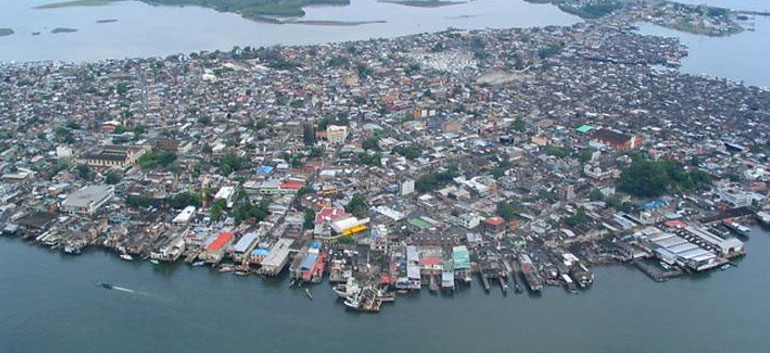Colombia’s southwestern city of Tumaco, mostly populated by Afro-Colombians, has experienced more than three times the national rate of murders from 2011 to 2013 as a result of guerrilla atrocities, according to the latest data released by the Human Rights Watch (HRW).
The country’s largest rebel group, the Revolutionary Armed Forces of Colombia (FARC), and succeeding paramilitary groups are reported to be responsible for the abuses, killings, disappearances, tortures, kidnappings, forced displacement, forced recruitment, and death threats in Tumaco, according to HRW.
Tumaco, which is a port city located on the Pacific coast of the state of Nariño, has a population of approximately 200,000 people; 89% are Afro-Colombians. Tumaco’s rates of poverty, illiteracy, and infant mortality exceed more than twice the national average, according to the organization.
“The abuses of the FARC are having a devastating effect on Afro-Colombian communities in Tumaco,” said Jose Miguel Vivanco, America’s director for Human Rights Watch in a statement.
“The FARC exercised tight control over the lives of many residents of Tumaco, who are forced to remain silent while the guerrillas installed mines in their fields, expelled them from their homes and kill their neighbors and loved ones with impunity.”
According to the report, Tumaco has one of the highest levels of killings, disappearances, sexual violence and abuses related to the armed conflict in Colombia.
The murder trail
In a study, there were 366 conflict-related murders committed in the southwestern state of Nariño between 2011 and 2013. This figure exceeds more than any other state in Colombia.
In 2012, an alleged FARC guerrilla accepted responsibility for a bombing which killed 11 people and injured 70 in Tumaco.
MORE: FARC accepts responsibility for Tumaco atrocity
During the same period, the annual murder rate in Tumaco was 110 per 100,000 inhabitants, according to HRW. This is more than three times the national rate and among the 10 highest rates of all countries according to United Nations data.
Without a trace
Disappearances in Tumaco are close to the top of the charts, representing the second highest figure in Colombia with 30 conflict-related disappearances between 2011 and 2013, according to the Victims Unit.
Tumaco residents said paramilitary successor groups would sometimes dismember the people they killed. Residents of two districts said the groups had houses where they would dismember victims, according to the report.
Sexual abuse
The organization documented a wide range of abuses against victims in Tumaco during 2013 and 2014. HRW found that in many cases, there was credible evidence that the FARC was responsible.
Overall, Colombia has had serious issues seeking justice for acts of sexual violence when earlier this year, Colombia’s impunity rate for sexual violence crimes reached 98%.
MORE: Impunity for sexual violence in Colombia reaches 98%: International forum
The report revealed that of the 90,000 cases of sexual violence against women that have been reported during the country’s 50-year armed conflict, less than 10% of the perpetrators of the crimes have been sentenced.
Forced to move
HRW reported more than 10,000 residents of Tumaco have been forced out of their homes every year since 2011.
This only adds to the country’s ranking as having the second highest rate of forced displacement in the world.
MORE: Colombia has 2nd highest rate of forced displacement in the world: UN
Colombia’s half-century civil war has uprooted a total of almost six million Colombians to date.
Crimes unpunished
In Tumaco and surrounding cities, prosecutors have not obtained convictions in more than 680 investigations into disappearances and forced displacements that have occurred since 2009, according to HRW.
Only four of the 314 investigations of acts of violence and sexual abuse since 2009 have been issued convictions.
During the investigation, HRW found that a total of eight local prosecutors were responsible for more than 1,100 investigations each. In some cases, authorities were slow to investigate abuses or never did.
Where peace is due
The FARC and the government have been undergoing peace talks since November 2012 in an attempt to end the country’s 50-year civil war. These peace talks have made history by being the first dialogue to include the participation of victims.
MORE: Colombia government, FARC begin new round of peace talks
The peace talks have failed to result in a ceasefire, however, and so the war between the government and the FARC is still in effect.
“While the FARC hold peace talks with the Colombian government in Havana, its members in Tumaco commit atrocities against some of the most vulnerable communities in Colombia,” said Vivanco, director for America’s HRW.
“A peace agreement could eventually improve conditions in Tumaco, but meanwhile the FARC should end their serious and persistent abuses against the civilian population, and the government must ensure justice for the atrocities committed by all parties to the conflict.”
Sources
- Colombia: zonas afrocolombianas asoladas por las FARC (Human Rights Watch)


